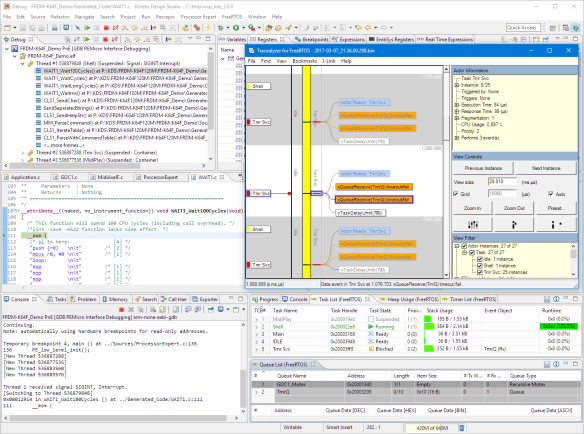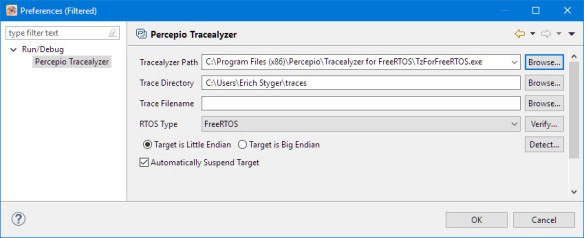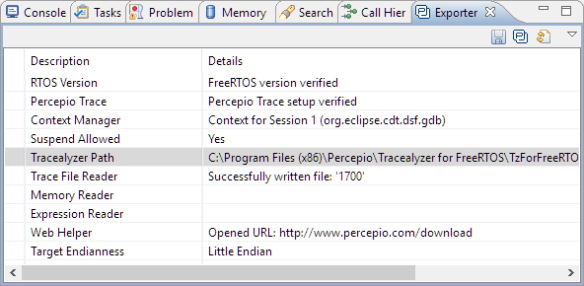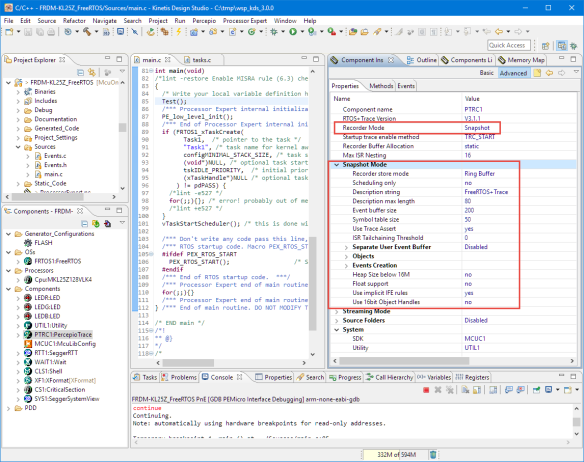A Look at the Percepio FreeRTOS Tracealyzer Plugin for Eclipse
Do you want to use a normal GDB-based debug probe to capture snapshot traces? You can do that with the Percepio Tracealyzer plugin for Eclipse.
Join the DZone community and get the full member experience.
Join For FreeGood news for everyone using Eclipse, FreeRTOS, and Percepio Tracealyzer: Percepio has released an Eclipse plugin that makes snapshot tracing very easy and convenient using a GNU gdb debugger in Eclipse, like Kinetis Design Studio:

Eclipse with Percepio Tracealyzer
I’m using the Percepio Tracealyzer for FreeRTOS in many of my projects. I can trace and then inspect the system, which allows me to fix performance or runtime issues. The Tracealyzer gives me information about all kind of things, including semaphore/mutex usage, task execution time, and heap memory usage. Recently I have mostly used the RTT streaming mode with SEGGER J-Link probes (see FreeRTOS Continuous Trace Streaming). But RTT is only supported by SEGGER probes, and using other probes, like the P&E Multilinks, in snapshot mode was rather painful. Now this changes, as the Percepio Plugin simplifies snapshot tracing a lot: It is able to directly read the snapshot memory buffer from the target within Eclipse and using a connection to the GDB running. That’s really great!
This new plugin is not a full Eclipse integration, and the Tracealyzer application is still separate from Eclipse. But it makes it a lot easier to use the Percepio Tracealyzer in combination with Eclipse.
Installation
To install the plugin, point the Eclipse updater (menu Help > Install New Software) to the following update site:

Percepio Exporter Plugin installation
The site is accessible as well with an https:// connection. But this might lead to connection problems, depending on the host Java security settings.
And install the plugin. At the end, restart the IDE.
Eclipse Menu
The plugin adds a few top-level Eclipse menus to the IDE. The plugin does not come with the Tracealyzer itself, but there is a menu item that guides me to the Percepio download page for it:

Percepio Eclipse menu
Preferences
The menu has an entry to the Eclipse workspace preferences (under Run/Debug)

Tracealyzer preferences
There I can configure the path to the Tracealyzer application and where it shall store the trace files.
Exporter Preferences
The menu entry ‘Exporter Preferences‘ opens a view that shows various pieces of information. The ‘Context Manager’ entry shows what is responsible for the current (debug) session. In my case, it shows GDB:

Exporter preferences
The ‘Percepio’ icon in the view allows you to launch the Tracealyzer application, too. A nice extra!
Save Snapshot Trace
The plugin can use the active gdb connection to read the snapshot trace buffer from the target memory. For this, I have to configure FreeRTOS+Trace for ‘Snapshot’ mode:

Tracealyzer Snapshot Mode
With this, I can use the ‘Save Snapshot Trace’ menu:

Save Snapshot Trace
This even works with a running target: It will stop the target if needed with GDB, read the trace data, export it to a file, then open the Tracealyzer application to inspect the trace: Awesome!

Tracealyzer with FreeRTOS application
Summary
The Percepio Trace Exporter plugin in Eclipse is not a full integration of the Percepio Tracealyzer into Eclipse, but it makes capturing FreeRTOS snapshot traces with Eclipse very easy and simple. That way, any normal GDB-based debug probe can be used to capture snapshot trace. And who knows, maybe there will be a way to capture streaming trace in a similar way. At least reading data with the debugger while the target is running gets more broadly available, see P&E ARM Cortex-M Debugging with FreeRTOS Thread Awareness and Real Time Expressions for GDB and Eclipse. In any case, the FreeRTOS ecosystem gets better and better.
Happy tracing!
Links
- Percepio Eclipse Plugin: https://percepio.com/docs/FreeRTOS/manual/Recorder.html#eclipse
- Percepio Trace Exporter: https://percepio.com/exporter/
Published at DZone with permission of Erich Styger, DZone MVB. See the original article here.
Opinions expressed by DZone contributors are their own.

Comments